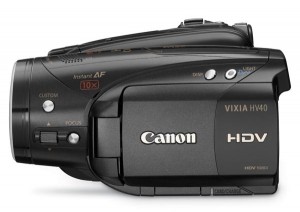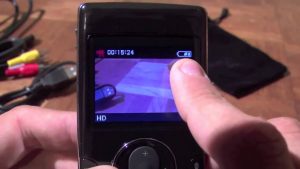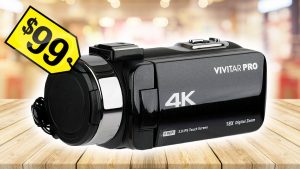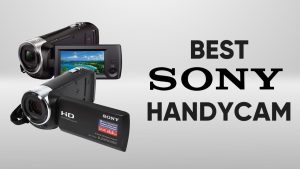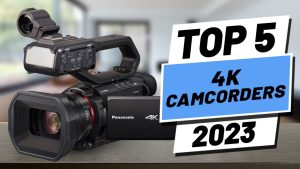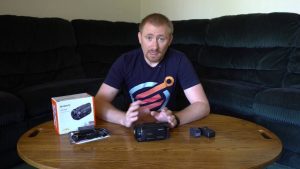To begin with HD pocket video cameras are different from a regular pocket video camera. HD stands for High Definition and this indicates that the video which these devices can capture is high definition video.
High Definition video can be captured and displayed in many formats. HD Pocket cameras currently capture video in 720p and 1080p modes, although this is certain to change and increase over time.
Video mode Frame size in pixels (W×H) Pixels per image1 Scanning type Frame rate (Hz)
720p 1,280×720 921,600 Progressive 23.976, 24, 25, 29.97, 30, 50, 59.94, 60
1080p 1,920×1,080 2,073,600 Progressive 23.976, 24, 25, 29.97, 30, 50, 59.94, 60
If you do not have a TV or computer monitor that is capable of displaying HD video, you will not realize the clarity and difference from standard definition video. This should be considered when purchasing an HD pocket video camera.
The higher the resolution the more memory will be consumed even for shorter videos. Larger HD videos will also require more computation power (computer and video CPU) in order to perform post processing with the video. However, the results from an HD video are significantly clearer and more vibrant than standard definition.
Considering that many HD pocket video camcorders are lightweight, compact, and some are even waterproof and can capture video under water these camcorders offer many benefits above bulkier and heavier full size camcorders.
However, there are many other factors to consider prior to making a purchase as you certainly do not want to incur post sales regret.
HD Recording time
Generally you will want at least 30 minutes of battery life when recording and if possible 60 minutes. This will depend on the type of batteries and how much power the device consumes. So make certain you compare this specification.
Memory Storage
Your new HD pocket video camcorder should allow you to store as much as 120 minutes or 2 hours of HD video. Depending on the quality you capture (see above) this may be reduced. You should be able to capture at least 120 minutes at 720p if the cameras technology compresses the video in an efficient manner. Solid state memory should be a standard of 8 GB and possibly expandable up to 32 GB if you deem this to be necessary.
Sound and Microphone
Local playback sound is not as critical as recording sound and even though when you view your captured video from the recorder it may play from one speaker (mono) you will want to be certain that the audio captured is in stereo if you plan to use the captured video for a quality exhibit. If sound is not that critical to you then you can opt for a mono version, but consider that the experience will not be a genuine when viewing on your home computer HD monitor or HD TV.
Lens Zoom
Many do not realize the difference in optical zoom and digital zoom. Optical zoom actually is a much higher quality and will render a much clearer picture when at the maximum focal length. You will pay more for a HD pocket camcorder that is capable of 2X or greater because of the complexity and quality of the glass in the lens.
Digital zoom renders the image as the processor interprets the image as increased focal length. So this is not a true zoom function and is not really usable at longer focal lengths, you should clearly focus on a pocket camcorder that utilizes optical zoom rather than digital.
Frames Per Second
Some cameras may allow you to acquire video at a frame rate of 24 fps (frames per second) which is a very efficient standard. This allows for quality motion with little or no jitter in playback but with reduced file size. This may be a major factor in recording and battery life so keep a sharp eye for the details of this specification.
30 fps is a standard that is very common and produces a slightly better quality transition in fast paced video capture. This is barely noticeable by the human eye and does trade the quality of this format for memory storage and battery life.
Viewing Screen Size
You may be particular about the video that you capture and that it looks the way you want it without post processing. This is where having a larger viewing screen for playback will come into consideration, but again there is a trade off for battery life and the bulkiness / size of the pocket camcorder. Remember to keep your focus that you are intending this to be as portable as possible and you will logically be limited on how large your viewing screen can be. anywhere from at least 2 inches to 3 inches should be sufficient, however anything smaller than this will be difficult to make out any details until you process the video on a larger screen.
In conclusion HD Pocket Video Camcorders are a very innovative technology that has only recently became affordable to general consumers. There are many choices to choose from but consider that just because a model is popular does not mean it is the best deal for your money. Take some time and choose your video camera wisely and you will be certain to enjoy all of the moments that you had wished you had on video that you now can capture in HD quality.

